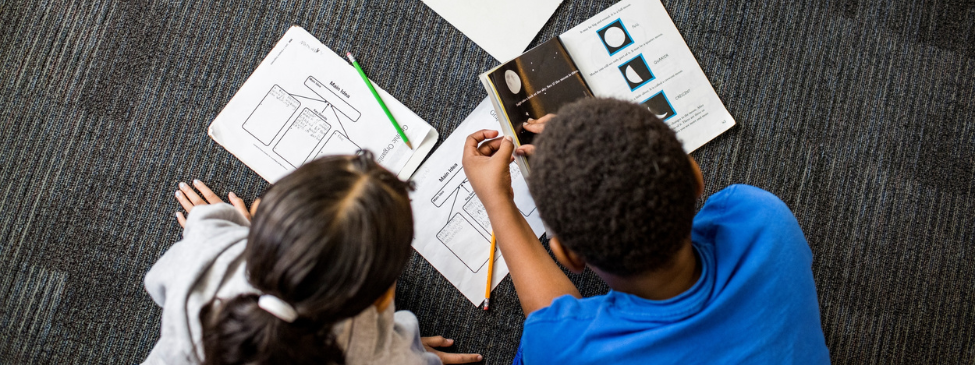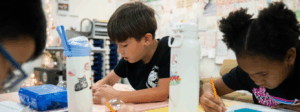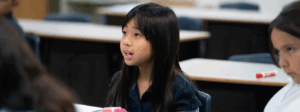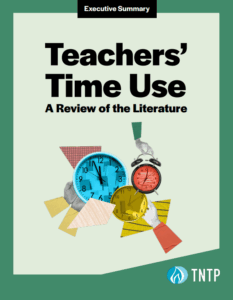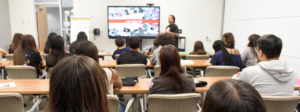Dr. Jason Okonofua is a nationally renowned psychologist who focuses on interventions to reduce student suspensions and expulsions. This is significant work. When students receive disciplinary action in school, it can have negative effects on attendance, grades, standardized test achievement, high school graduation rates, and college enrollment. And students of color—particularly Black and Latino students—are suspended and expelled at higher rates than their white peers, even for similar behaviors. Addressing these disparities is critical to ensure that all students have a path towards economic and social mobility.

Dr. Okonofua developed “empathic instruction,” an evidence-based teacher training strategy that has shown to have dramatic impact on both teachers and students:
- Reduced suspension rates—up to 50 percent in randomized controlled studies.
- Amplified benefits for students of color and students with disability status.
- Higher job satisfaction, a key predictor of teacher retention.
TNTP is proud to be partnering with Dr. Okonofua to bring this work to more school systems. He spoke with TNTP Senior Vice President Bailey Cato Czupryk about his approach and why he thinks that empathy has never been more important to bring into schools and classrooms.
This interview has been edited for length and clarity. If you’d like to bring Empathic Instruction to your system, please reach out to [email protected].
Tell us about yourself and your background. What led you to this work?
I was born in Memphis, Tennessee. I usually did well in school but would often get in trouble—not for anything too serious, but just for speaking my mind. “Insubordination” was the catch-all. There were metal detectors and security cameras all over the place. The environment prioritized compliance, and it felt like students and teachers antagonized each other.
In high school, I was fortunate enough to attend a prep school off the coast of Rhode Island for junior and senior years. Instead of metal detectors and cameras, there was a private beach. And the same “insubordination” that got me in trouble in Memphis was encouraged—according to my new teachers, it helped me develop strong arguments.
In other words, the same behavior elicited a completely different reaction from adults depending on the context.
I attended Northwestern University where I fell in love with psychology and the idea of applying that to social situations. That’s what I ultimately studied at Stanford for my doctoral research.
Given my experience growing up and attending schools in different places, I was interested in studying how teachers’ perception and context can affect student-teacher relationships.
What is the role of student-teacher relationships in how students experience school?
Teachers play a pivotal role in students’ development. Of course, teachers can have an incredibly positive impact. Most of us had at least a few great teachers in school. We can remember a teacher who made us feel seen and heard.
But sometimes, the student-teacher relationship can go wrong —a teacher disciplines a student harshly to respond to misbehavior, or students don’t learn as much as they should. Everyone loses.
Unfortunately, a lot of negative student-teacher relationships stem from how teachers respond to misbehavior. Even if it’s a seemingly small thing, it can spark a cycle where the student doesn’t trust the teacher and makes it more likely that the student becomes less engaged across all their classes. It also makes it more difficult for teachers to reach their teaching goals or benchmarks.
This is compounded for students from stigmatized groups who are more likely to receive that negative response. That doesn’t mean that teachers are bad people—even well-intentioned people make snap judgments and decisions based on how they perceive individuals they don’t know well. That’s how our brains make sense of the world. But nonetheless, it goes a long way towards explaining disparities in discipline and suspension rates.
Describe your work on empathic mindset. Why did you want to explore that topic, and what did you find?
Our work on empathic mindset started as research on student race and teacher discipline. The data is clear that teachers discipline students of color, those with a history of misbehavior, or mental health differences more harshly than white students. A primary reason is that teachers may believe those students are more likely to be “troublemakers.” That is a fixed label. But of course, children are the opposite of fixed. They are changing all the time. We wanted to explore that further and see if we could break that vicious cycle.
Most people become teachers because they love students and want to help them grow—but in times of stress, it’s easy to forget that. My colleagues and I created a series of exercises for teachers to encourage empathy and remind them why they chose the profession. The goal was that teachers would keep that in mind in times of conflict. We wanted to see how the exercises might affect suspension rates overall, as well as for stigmatized groups.
At first, we found that it cut suspension rates by 50 percent across the entire student body. But since the school was majority Latinx, it was difficult to determine how it also mitigated policy-relevant inequities. So we repeated the experiment in a larger school system with a more diverse student body, and were excited that suspension rates again dropped overall, but especially for students of color, students who had previously been suspended, and special education students. In other words, it started to shrink disparities. We were on to something real.
Additionally, the decreases in suspension rates continued the following year, including in classrooms where teachers had not experienced the intervention.
You’re now working to scale empathic instruction across school systems. Can you tell us about that work?
I’m a scientist first and foremost, but I also approached this work thinking about scalability. How can we have the largest impact?
As we’ve expanded this to more schools, we’ve tried to be thoughtful about what working in a school is really like. We know that teachers are stressed and are sick of mediocre professional development. So how can we ensure it doesn’t come across that way?
We also know we must meet people where they are. While we’re thrilled with our results, it’s not a magic bullet—it must be tailored to local context. In some ways, customization is a whole body of work in itself.
Why do you think that this is the right moment for school systems to pursue this work?
Empathy in schools is more important than ever. These are fraught times. There’s a lot going on—the pandemic, divisive politics, our reckoning with race and stigma. Teachers and students alike are more anxious and unsettled—which can put relationships at risk.
To tackle all the problems facing our schools, we need to bring teachers and students together, lift all of their voices. Our approach increases teacher job satisfaction and sense of self-efficacy. And when teachers are happy and comfortable, improvements for students will follow.
But it’s not just about benefits for students or school districts—this is what teachers want, too. We hear all the time that teachers aren’t being heard; it’s like nobody has been asking them how they feel. More empathy in our schools will help everyone.
